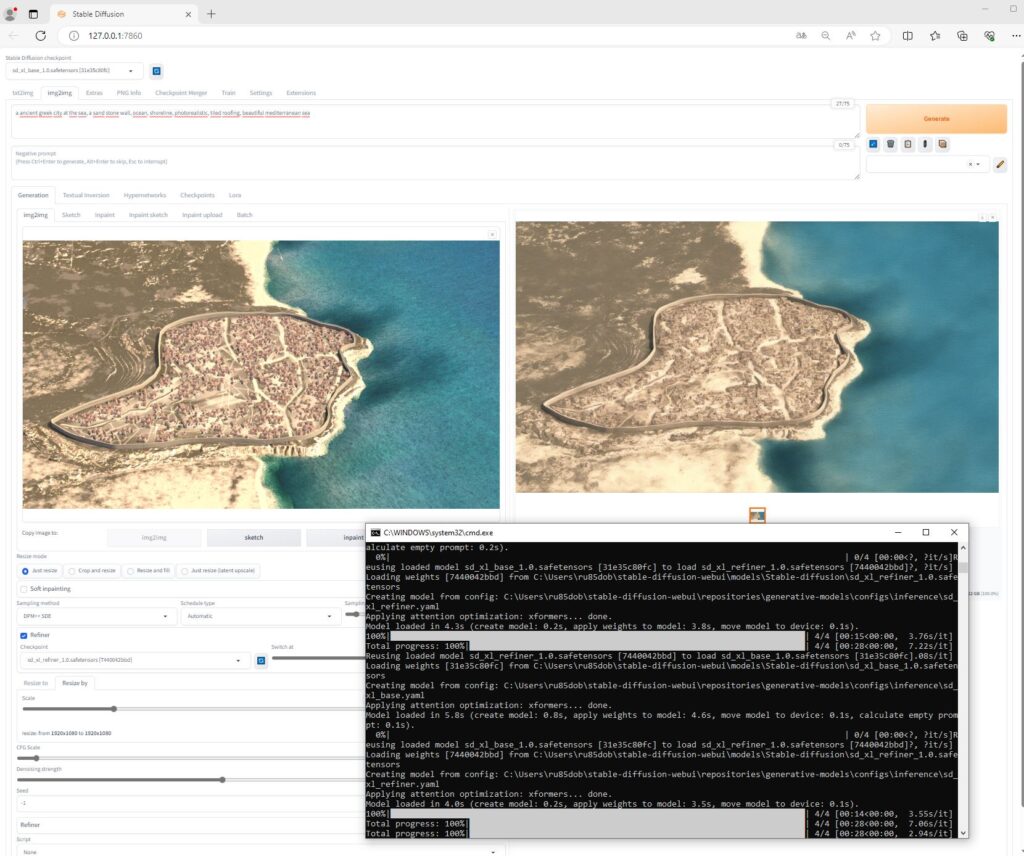0.1. Stable Diffusion - Generative AI combined with 3D for quick and effective Production of Archaeological Illustrations
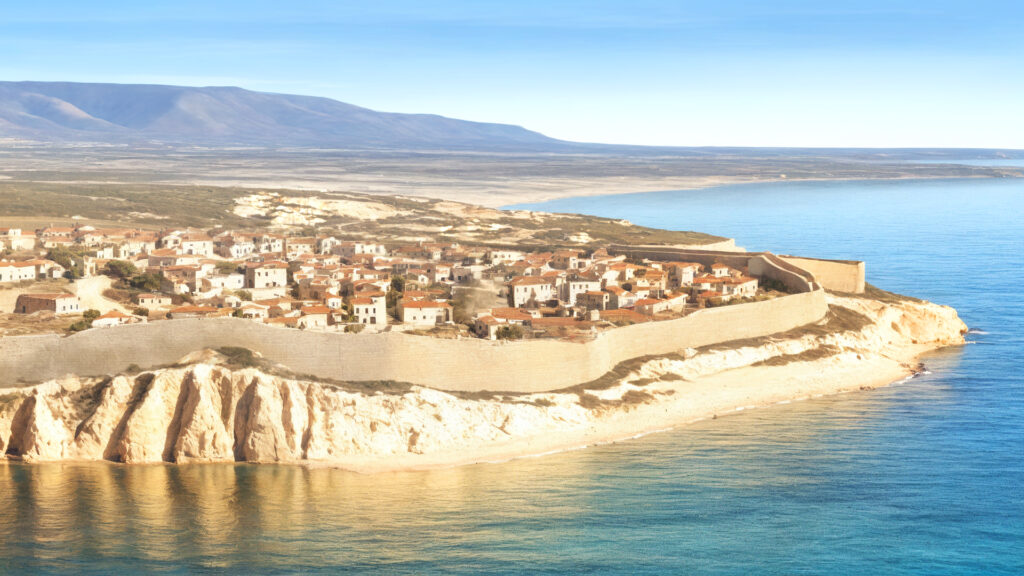
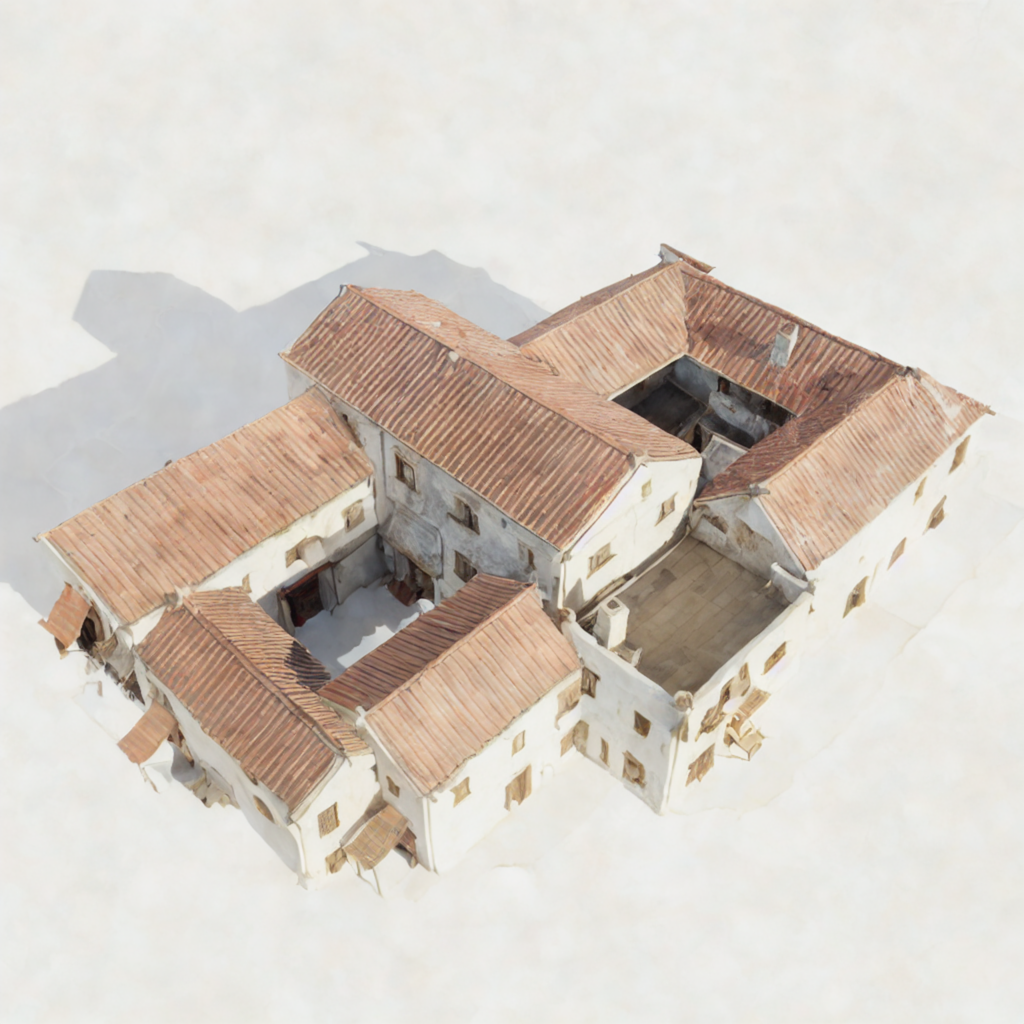
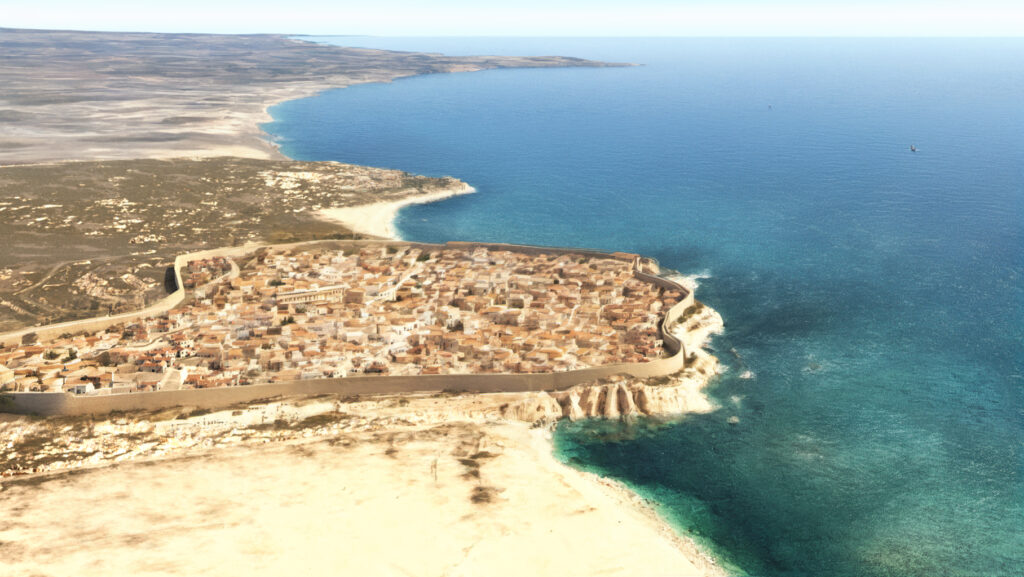
Archaeological illustrations can be very time-consuming and expensive. The HADES project is investigating new possibilities for faster and more effective production of archaeological illustrations using generative AI. The aim is to be able to produce realistic-looking illustrations of the Greek colony of Eloros with the interaction of conventional 3D reconstruction, digital terrain models (created with our LIDAR scanner) and generative AI (Stable Diffusion).
The digital terrain model of the settlement hill and the surrounding landscape serves as the basis. Rough textures, paths and of course the buildings, some of which are archaeologically proven and some only assumed, are reconstructed with 3D models using conventional 3D technology. The advantage of this workflow is that work in 3D space can be relatively undetailed and therefore fast, as the artificial intelligence adds these details at the end. Organic details in particular, such as bushes, waves, realistic water, rocks, sand drifts etc. can only be realistically implemented with a great deal of effort using conventional 3D technology and can be added by the artificial intelligence afterwards by simply describing them with prompts.
By reducing the amount of work involved, archaeological results can be visualized quickly and the images can be expanded and improved iteratively as new insights are gained without much additional effort.
However, the technology still has some limitations. For example, it is currently only possible to generate single images. It does not (yet) work reliably for video. However, developments in the field of generative AI are progressing so quickly that this is likely to change soon.
